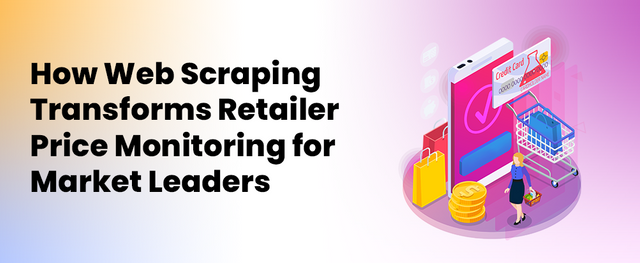How Web Scraping Transforms Retailer Price Monitoring for Market Leaders

Market leaders are increasingly turning to advanced technologies to gain an edge, and web scraping has emerged as a game-changer in the realm of price monitoring. This powerful tool is revolutionizing how retailers track, analyze, and respond to market pricing dynamics. Let's dive into how web scraping is transforming the retail sector and explore some real-world examples of its impact.
The Power of Web Scraping in Retail
<A visual representation of price comparison between different retailers, showcasing how web scraping can gather and display this data.>
Web scraping allows retailers to automatically collect vast amounts of pricing data from competitor websites and online marketplaces. This technology enables businesses to:
- Monitor competitor prices in real-time
- Track price changes and promotional activities
- Identify market trends and pricing patterns
- Make data-driven pricing decisions
For market leaders, the insights gained from web scraping are invaluable, allowing them to maintain their competitive edge and respond swiftly to market changes.
How Market Leaders Leverage Web Scraping
Real-Time Competitive Analysis
Leading retailers use web scraping to keep a constant pulse on their competitors' pricing strategies. By automating the data collection process, they can:- Track price changes across thousands of products simultaneously
- Identify promotional patterns and discount strategies
- Respond quickly to competitor price changes
Dynamic Pricing Optimization
With the insights gained from web scraping, market leaders implement sophisticated dynamic pricing strategies:- Adjust prices in real-time based on competitor movements
- Optimize pricing for different customer segments and time periods
- Maximize profit margins while remaining competitive
Trend Forecasting
Web scraping tools allow retailers to collect and analyze historical pricing data, enabling them to:- Predict future pricing trends
- Anticipate seasonal fluctuations
- Prepare for market-wide sales events (e.g., Black Friday, Cyber Monday)
Assortment Planning
By monitoring competitor product offerings, retailers can:- Identify gaps in their own product range
- Spot emerging product trends
- Make informed decisions about inventory management
Web scraping has become an indispensable tool for market-leading retailers, enabling them to make data-driven pricing decisions, respond swiftly to market changes, and stay ahead of the competition. As demonstrated by our case studies, implementing a robust web scraping solution like MrScraper can lead to significant improvements in sales, profit margins, and customer satisfaction.
In an era where pricing can make or break a retail business, web scraping provides the competitive edge needed to thrive in the dynamic retail landscape. By leveraging the power of data, retailers can transform their pricing strategies and solidify their positions as true market leaders.
For a deeper dive into effective price monitoring strategies using web scraping, check out our previous blog: "How to Use Web Scraping for Effective Price Monitoring: Strategic Pricing in Retail".